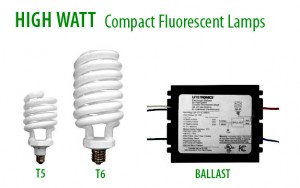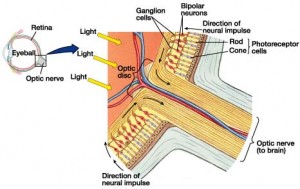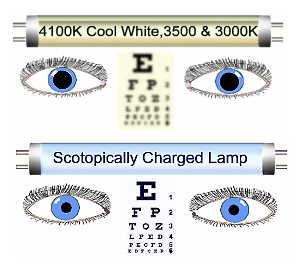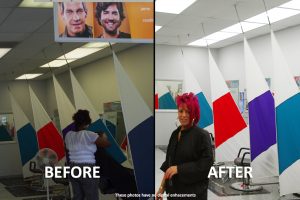Convert HID or Metal Halide To CFL with the new Litetronics High Wattage CFL System
With the economical crunch over the past few years and the ever growing popularity of going green, converting hid to CFL has become a growing trend. By simply by passing the HID ballast and screwing in a Compact Fluorescent Lamp, business have discovered that the S/P Ratio (Scotopic to Photopic Lumens) is great enough to be a viable option, providing adequate light.
Drawbacks of Retrofitting HID To CFL
As great of an option as this procedure is, many customers have found that the line voltage supplied to their HID fixtures is greater than 120 Volts, typically 208, 240 or 277 volt. In these cases, customer find themselves either not being able to find a CFL bulb in those voltages, with the exception of the TCP 277V spiral, or that the fixtures are too small to fit an equal wattage CFL bulb. For customers with 208, 240 volt system, the only option has been to pay large expenditures in order to convert electric panels, and rewire to accommodate lower voltages.
Litetronics New High Wattage CFL System Makes Retrofitting Affordable
Litetronics, a leading producer of innovative CFL products has introduced its full line of HID to CFL retrofit kits. These kits include a non-ballasted CFL high wattage lamp for easy screw in the socket installation with a remote multi-volt ballast capable of 120, 208, 240 or 277 Volt systems. Because these new CFL lamps are non-ballasted, the have a much smaller MOL (Maximum Overall Length), and can fit into virtually any HID fixture from wall packs, parking lot lights, high bays and parking garage canopy lights.

Benefits Include:
- 10,000-hour life
- 85 CRI, 5000k natural white
- 65 Up to 150 watts
- Excellent lumen maintenance
- Advanced Amalgam maintains optimal lumens
- Instant start and instant restrike
- Reduced color shift compared to metal halide
- External ballast reduces lamp replacement costs
Litetronics high watt compact fluorescent lamps (CFL’s) are designed to replace HID lamps in high bay applications for energy savings and higher ROI. They off er high 85 CRI for excellent color rendition, and they promise reliable operation with instant start and instant re-strike. Unlike HID lamps, Litetronics high watt CFLs have no color shift over time, and they have lower glare and higher lumen maintenance. With a lower system cost than HID, Litetronics high watt CFL’s are the best solution for high and low bay lighting.
Litetronics high watt CFL’s utilize an external ballast, which offers better heat management than self-ballasted high wattage CFL’s. When the lamp and ballast are together in a self-ballasted lamp, heat builds up in a condensed area, which leads to premature failures. Separating the lamp and ballast allows for better heat management, which translates into maximum life and lumen maintenance. The external ballast also reduces lamp replacement costs compared to self-ballasted CFLs because you only need to replace the lamp at end of life instead of the lamp and ballast. This means that Litetronics high watt CFL’s are more cost-effective and provide higher ROI than alternative high bay CFL lighting. Litetronics high watt CFL’s also have a smaller MOL than competing lamps, which provides better optics out of the fixture. For superior high bay lighting, Litetronics high watt CFL’s are the fi rst choice.
For more information view our website or call Synergy Lighting for a free consultation.
Phone: (941)-756-4844
Toll Free: (877) 220-5483
e-mail: sales@synergylightingusa.com


 Often we tell customers about these really good natural white light bulbs called Sky-Brite Plus ®. Customers often neglect to address lighting thinking that their existing lighting is sufficient. At Synergy Lighting, we pride ourselves on our expertise and making the best possible recommendations to our clients and potential clients, all to often to be ignored. One customer who did not ignore our recommendations was the owner of Great Clips located in Bradenton, FL.
Often we tell customers about these really good natural white light bulbs called Sky-Brite Plus ®. Customers often neglect to address lighting thinking that their existing lighting is sufficient. At Synergy Lighting, we pride ourselves on our expertise and making the best possible recommendations to our clients and potential clients, all to often to be ignored. One customer who did not ignore our recommendations was the owner of Great Clips located in Bradenton, FL.

